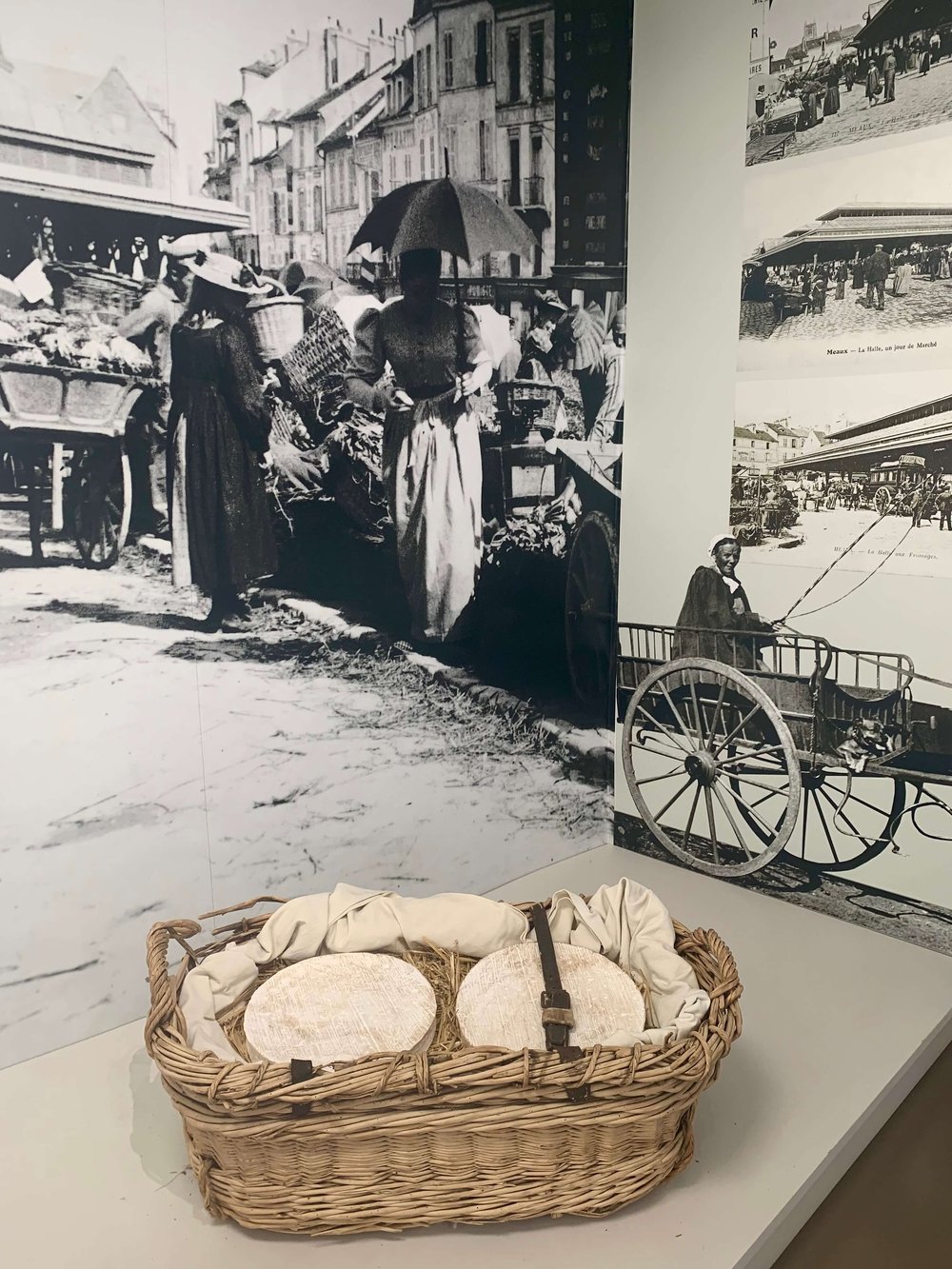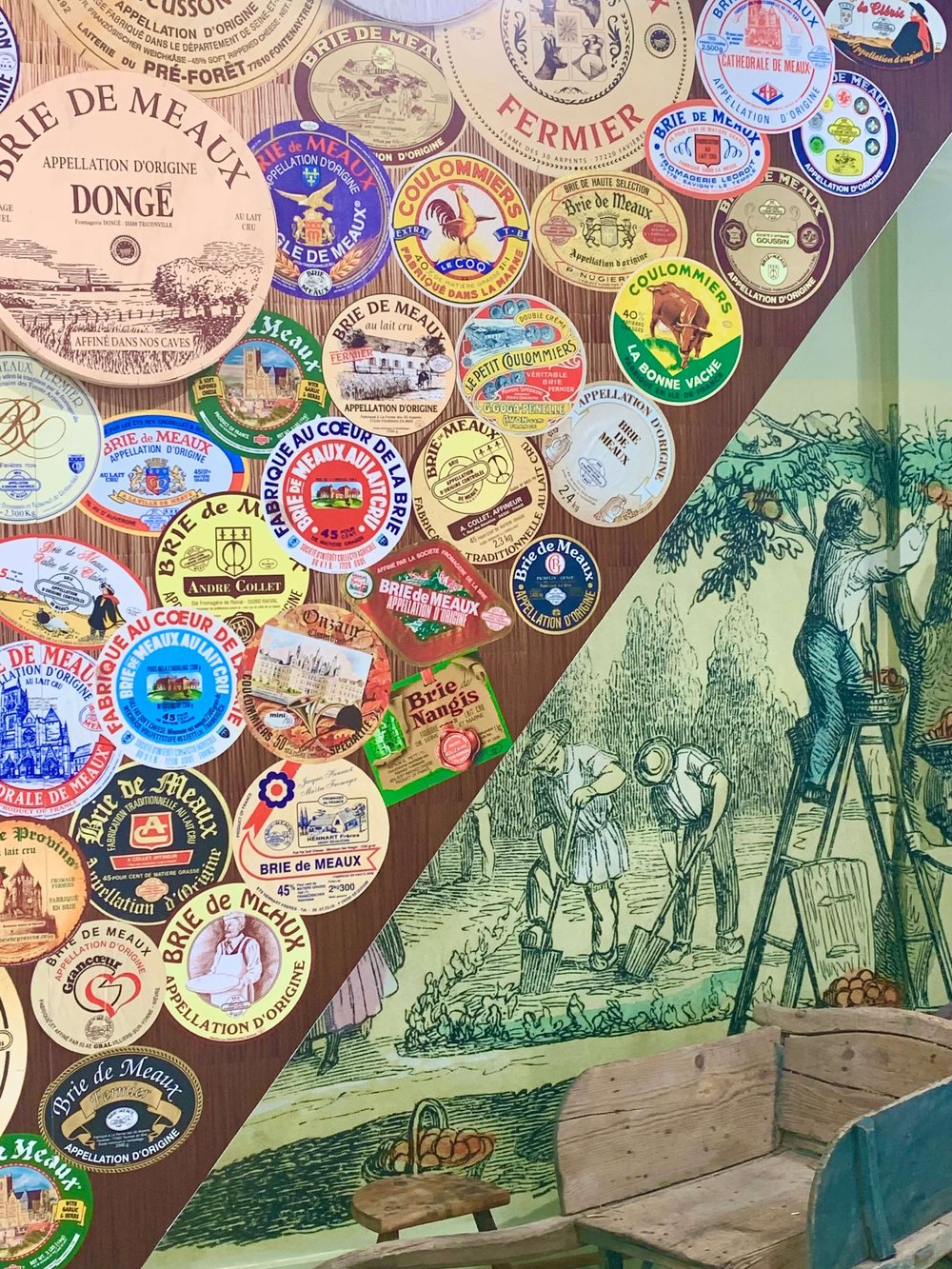If you love the creamy unctuousness of Brie, you are not alone. The cheese is so popular that it has a French museum dedicated to it. The cozy little Maison du Brie de Meaux is only a 40-minute train ride from Paris, located in Meaux, a town famous for the cheese.
History of Brie

Brie was reportedly a favorite of Charlemagne and its irresistible charms seemed to seal the fate of King Louis XVI in 1791 when he stopped in Varennes on his hurried exit from Paris to elude the revolutionaries. But the Brie was so delicious he did not want to leave the table until he finished it. Unfortunately for him, the revolutionaries arrived before he could leave, he was captured and brought back to Paris to die. Then the large flat disk with a bloomy rind became the cheese of the people. A gastronomic revolutionary of the time proclaimed: “Brie cheese, loved by rich and poor, preached equality before it was suspected possible.”
Brie’s real moment of glory came in 1815 at the Congress of Vienna, where Talleyrand, Metternich, and ambassadors from thirty nations redistributed Europe after Napoleon’s wars. A competition was organized to designate the best cheese and, unanimously, Brie was crowned the “king of cheeses.”
Raw Milk Brie
Out of more than 1000 French cheeses, only 45 are designated AOP (appellation d’origine protégée) and only two are Bries made with unpasteurized cow’s milk: Brie de Meaux and Brie de Melun, both from the verdant meadows not far from Paris. The first, from Meaux, is produced in much larger quantities and comes in bigger wheels that can weigh up to 7 pounds and measure over 14 inches in diameter.
As Jennifer Greco described it in Brie 101, “the better known of the two protected versions , Brie de Meaux, has a luscious interior with flavors and aromas of mushrooms, melted butter, yeast, and sometimes a whiff of cruciferous vegetables.”
The Museum

Historical tableaux pair large photos of old tools with descriptions of the essentials of dairy farming. Modern display cases feature the tools for cutting, draining, turning, and molding, with details about every step in the process, including a surprising large yellow baglike item, which turns out to be a cow’s entire stomach lining, used for making rennet. The last steps include salting and the addition of penicillium, which causes the cheese to ripen from the outside inwards. A short film, available in both French and English, provides more details and if you time your visit correctly, you will be provided with samples of the creamy dreamy cheese to taste, along with another special product of Meaux, gingerbread flavored mustard.

And if you happen to pick a lucky day, you may meet some members of La Confrérie du Brie de Meaux dressed in their long white robes and wearing giant round hats fashioned to resemble large wheels of Brie. (France has hundreds of brotherhoods and sisterhoods that represent, support, and promote local products). The honor is taken very seriously, with new members being sworn in yearly. They hold annual competitions and bestow awards on the best cheesemakers as well as those restaurants serving the finest brie. With a lot of pomp and ceremony, these brie-lovers proudly participate in parades. Their motto: “Origine, Gout, Authenticité, Typicité, Terroir, Savoir Faire ne sont de vains mots,” means: Origin, Taste, Authenticity, Typicalness, Terroir, Know-how are not empty words.
The museum offers a shop and tastings on Saturday and Sunday by reservation. The museum is located at 5 Place Charles de Gaulle, 77100 Meaux. The ticket prices vary depending upon the day of the week and tasting.
